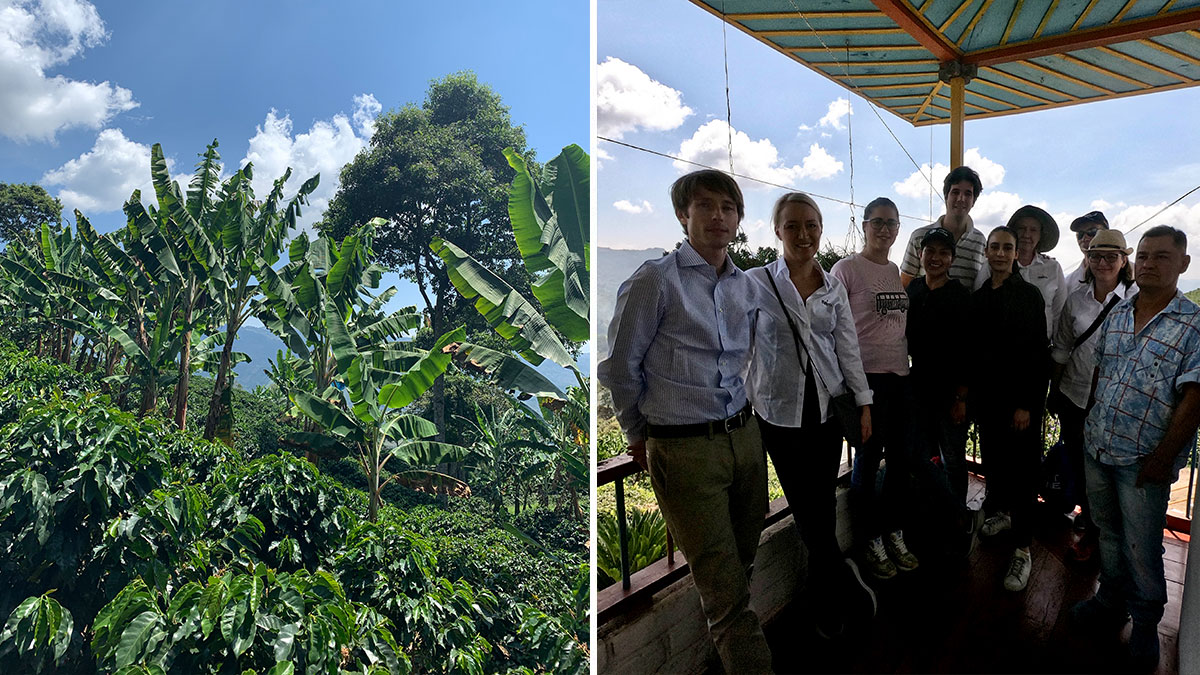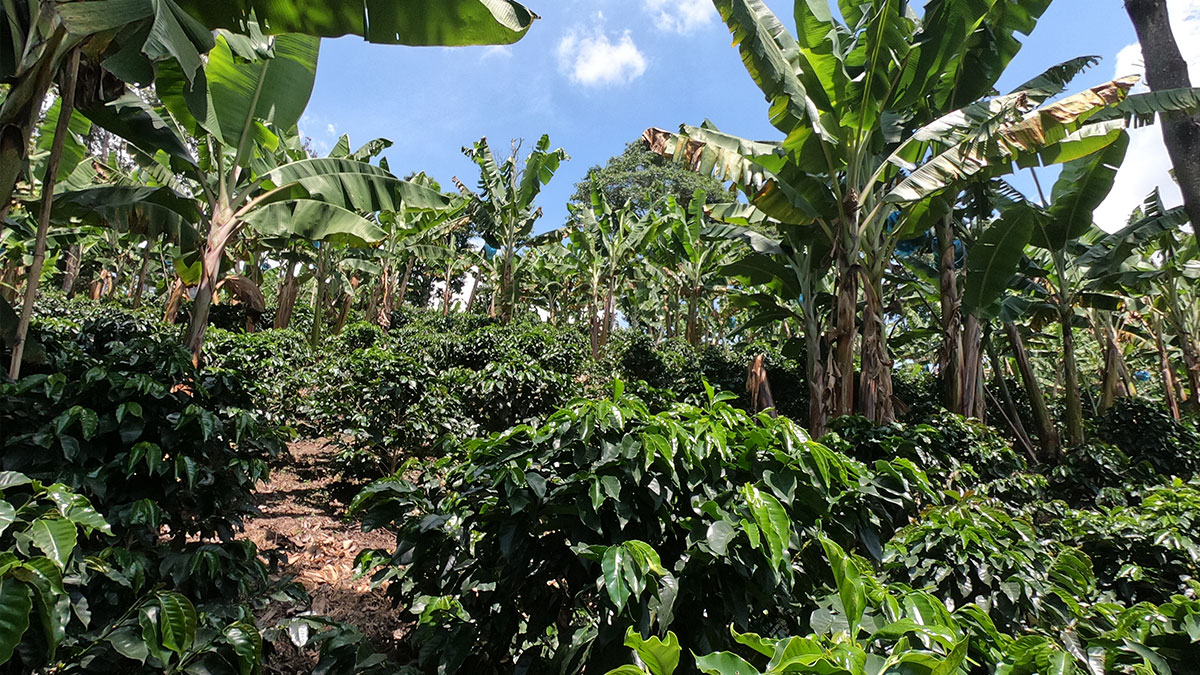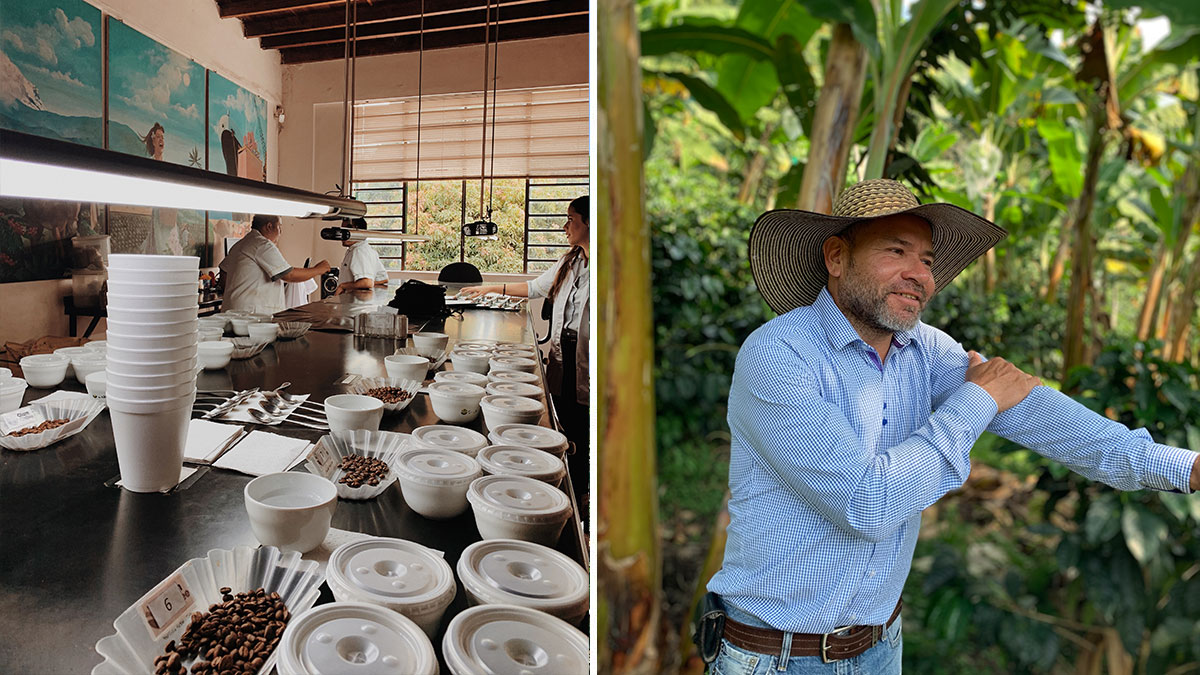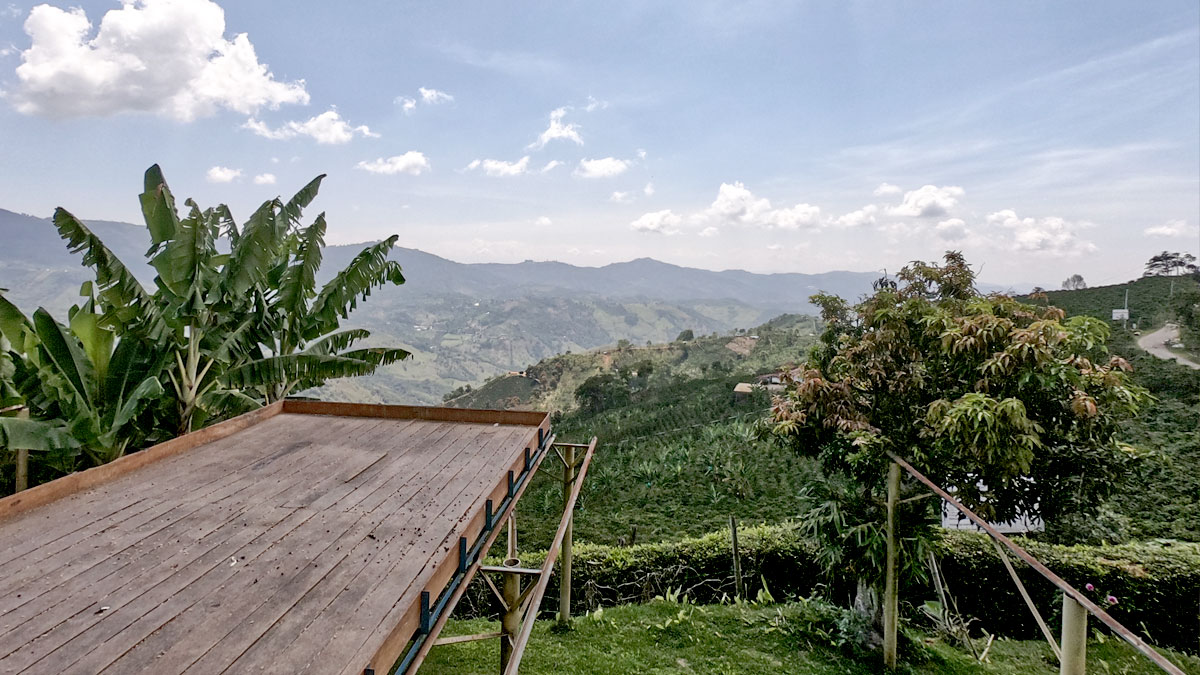
Sustainability is one of the keys to when we select coffees and the plantations we work with. This choice comes from our belief that, to ensure farmers an adequate standard of life, fair-trade and sustainably grown coffees are the only way to go.
Discovering sustainably grown Arabica varieties

Before the world stopped because of the pandemic, around February 2020, Bianca Bernini, Online Sales Manager here at Mokaflor and part of the third generation of the family, set off on a journey into the beating heart of Colombia’s coffee producing area: a paradise in the Andes called Eje Cafetero.
It is no coincidence that Colombia is considered the first producer of Arabica in the world: its territory’s characteristics and climate make it perfect for the growth of coffee.

Bianca Bernini, granddaughter of Mokaflor’s founder, Vasco Bernini, embarked on her journey with a specific goal: to visit the plantations with which Mokaflor has been working for years, focusing both on the coffee processing methods and on the campesinos (farmers) quality of life in the plantations together with, Alessandro Mazzocco, General Manager of the Italian branch of Olam International. Olam is one of Mokaflor’s green coffee suppliers and is sensitive in supporting developing countries, with the aim of improving the conditions of workers on the plantations and helping their communities with logistical and financial solutions.
Where Colombian coffee is born
Bianca’s journey also crossed the renowned regions for Arabica coffee production, those of Risaralda and Quindío, and only passing by small plantations called “fincas”, immersed in the tropical jungle, at an altitude of above 2000 meters, where the temperature never drops below twenty degrees
The first stop of this trip was Finca La Primavera, in the village of Playa Rica, a rural area in the municipality of Santuario, which is part of the Risaralda department. La Primavera is the result of an abandoned plantation’s recovery. After fifteen years, the plantation has returned to being productive and has been enriched with orange, lemon and mandarin trees as well as livestock.

After visiting Finca La Tesalia, another very small family-run plantation, the trip ended at Finca La Divisa, in the Quindìo region. A small farm which grows pluriculturales and where sustainability is the focus. Coffee is the main crop, but there is no shortage of Platano, Papaya, Guanabana and Avocado trees. These plants and trees contribute to the quality and uniqueness of Arabica coffee produced in these areas (Colombia, Castillo, Cenicafe and Tabi). The banana tree, a tree with a very tall trunk, is also a very important plant for the correct growth of coffee because it protects from the sun-light and from bad weather.
Focus on sustainability
The three plantations visited by Bianca all have a strong focus on sustainability, which make respect for the environment and sustainable cultivation a real trademark and a source of pride for the communities that inhabit them. But as we know, especially before the pandemic, the Arabica coffee market was characterized by very low selling costs despite being a very good and high-level coffee. Still, this doesn’t grant campesinos an income that is adequate for the quantity and quality of the work they do.

In fact, whereas pulling a shot of espresso only takes a few seconds, it takes more than five years for the coffee to land in our cup. This is the time the plants need to reach the right ripeness and for the growers to collect the drupes and proceed with the washing and processing.
The good news is that if we act in a conscious and faithful way towards what the specialty coffee industry has always claimed to appreciate (as in a fair trade, sustainable and transparent coffee industry, both environmentally and socially speaking) then also the farmers, who are “behind the cup”, will be able to carve out a fairer slice of living conditions.

